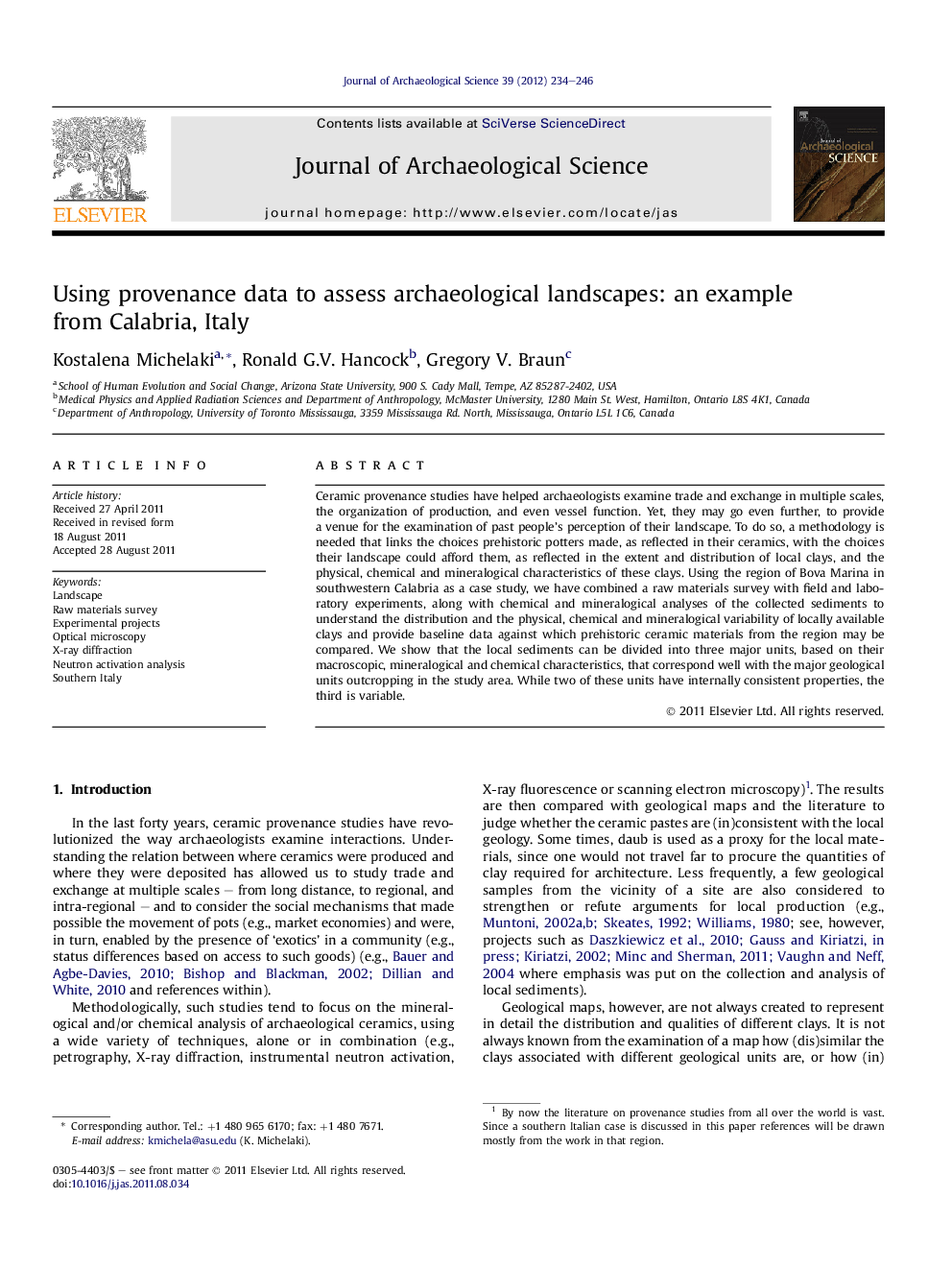| Article ID | Journal | Published Year | Pages | File Type |
|---|---|---|---|---|
| 1035879 | Journal of Archaeological Science | 2012 | 13 Pages |
Ceramic provenance studies have helped archaeologists examine trade and exchange in multiple scales, the organization of production, and even vessel function. Yet, they may go even further, to provide a venue for the examination of past people’s perception of their landscape. To do so, a methodology is needed that links the choices prehistoric potters made, as reflected in their ceramics, with the choices their landscape could afford them, as reflected in the extent and distribution of local clays, and the physical, chemical and mineralogical characteristics of these clays. Using the region of Bova Marina in southwestern Calabria as a case study, we have combined a raw materials survey with field and laboratory experiments, along with chemical and mineralogical analyses of the collected sediments to understand the distribution and the physical, chemical and mineralogical variability of locally available clays and provide baseline data against which prehistoric ceramic materials from the region may be compared. We show that the local sediments can be divided into three major units, based on their macroscopic, mineralogical and chemical characteristics, that correspond well with the major geological units outcropping in the study area. While two of these units have internally consistent properties, the third is variable.
► Clay sediments from southwestern Calabria, Italy examined. ► Properties of sediments assessed by field experiments and multiple laboratory analyses. ► Three different sediment units identified corresponding well with geological units. ► Implications for landscape and ceramic analyses considered.
